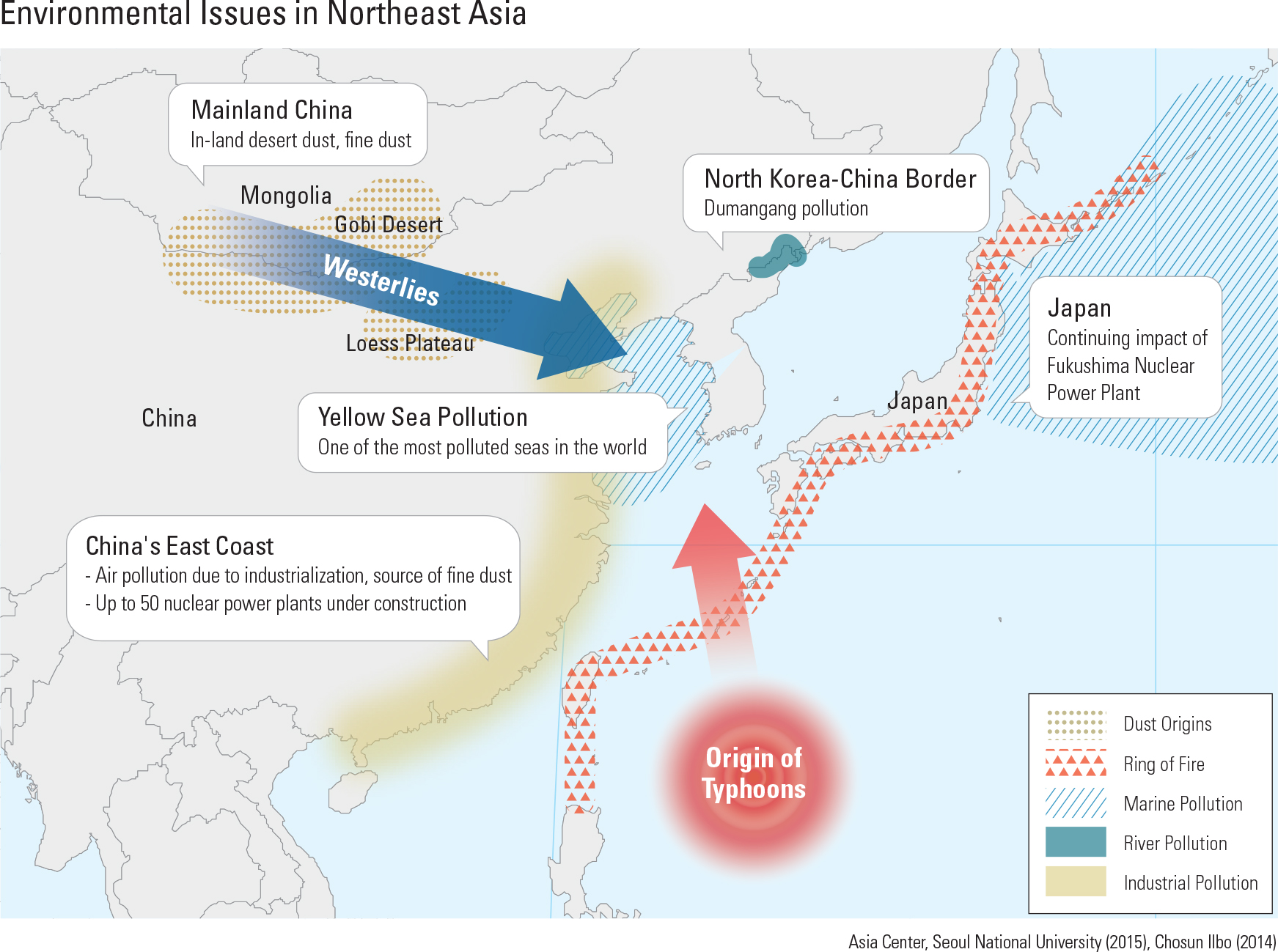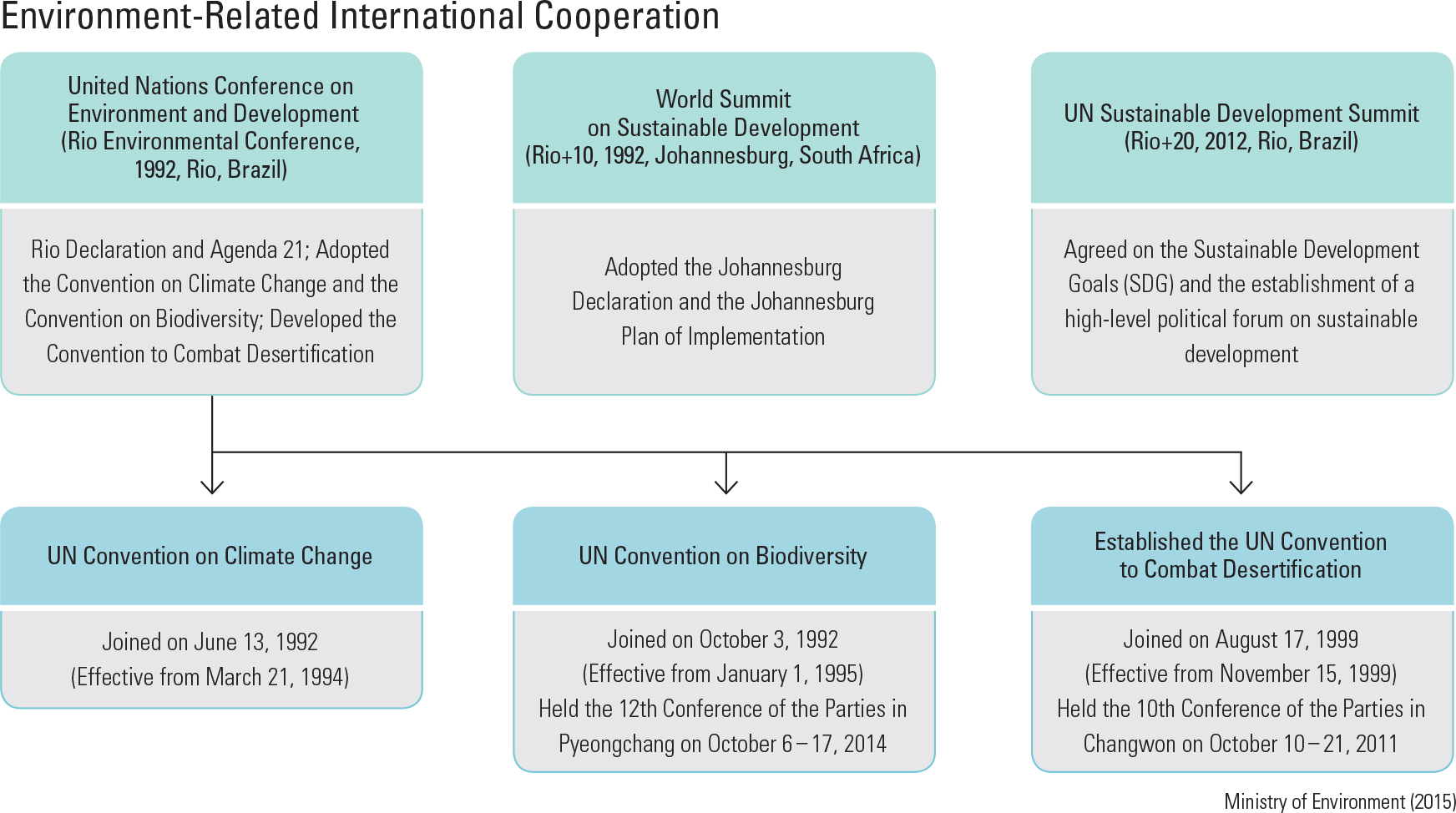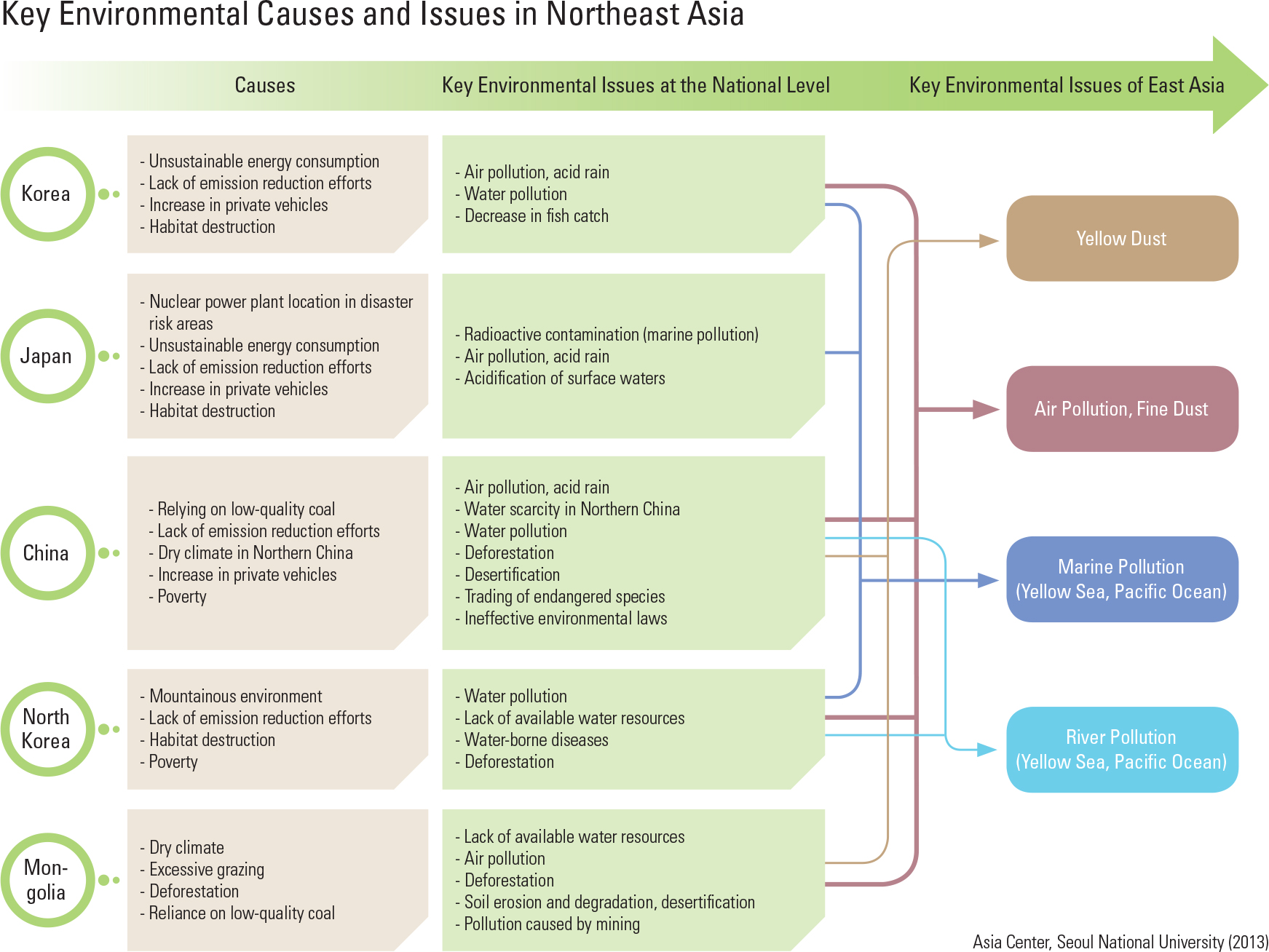English II
Every country in Northeast Asia faces different environmental challenges according to their natu- ral environmental conditions and socio-economic factors. Korea and Japan share environmental problems that can generally be seen in developed countries; their advanced industrial structures have led to increases in energy consumption and the number of private vehicles. On the other hand, countries such as North Korea and Mongolia ex- perience environmental problems that are brought about by poverty. In particular, North Korea is undergoing serious environmental damage as a consequence of forest degradation due to food and energy shortages. Mongolia and western Chi- na are affected by deserti cation and aridity due to their dry climate, while recent rapid industrial development in eastern China has caused serious air and water pollution. Such environmental problems in Northeast Asia are linked in diverse ways, and their consequenc- es are influential across countries. For instance, yellow dust originating from the Gobi Desert and the Loess Plateau picks up pollutants such as ne dust and nitrogenous compounds as it crosses the rapidly industrialized east coast of China. It then rides the westerly winds and reaches Korea and Japan. The pollution of international seas and streams such as the Yellow Sea and Dumangang is also being discussed as one of the most import- ant environmental issues in this region. Not only is Northeast Asia located on the same plate boundary, it also shares various disasters through westerly winds, currents, and typhoons. With an increase in risk factors such as the grow- ing number of nuclear power plants in eastern China, the future of Northeast Asia is projected to be even more vulnerable to environmental disas- ters.
page_2 |




